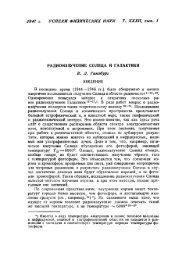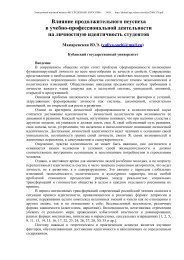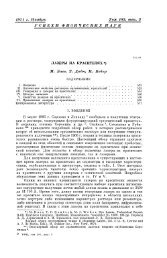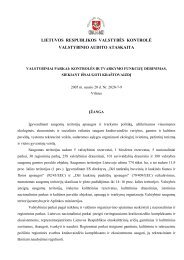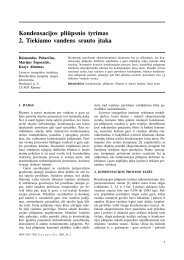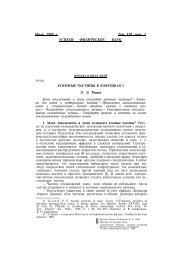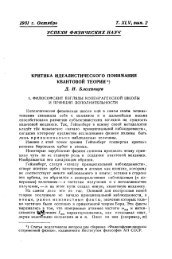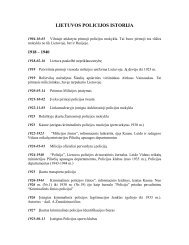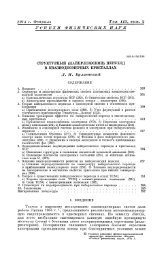University of Groningen Groningen Growth and Development Centre ...
University of Groningen Groningen Growth and Development Centre ...
University of Groningen Groningen Growth and Development Centre ...
You also want an ePaper? Increase the reach of your titles
YUMPU automatically turns print PDFs into web optimized ePapers that Google loves.
The main results for the product matches, UVRs <strong>and</strong> reliability indicators are shown in Tables<br />
3 <strong>and</strong> 4. Overall it was possible to match more than twice as many products between Mexico <strong>and</strong> the<br />
USA than between Brazil <strong>and</strong> the USA, i.e. 435 instead <strong>of</strong> 209. In the Brazil/USA comparison, for<br />
122 common industries it was impossible to match any products, in 56 industries it was possible to<br />
match one product, in 27 industries two products, in 10 industries three products, in 10 industries four<br />
products <strong>and</strong> in 4 industries five or more products. In the Mexico/USA comparison, in 61 common<br />
industries it was impossible to match any products, in 40 industries it was possible to match one<br />
product, in 42 industries two products, in 41 industries three products, in 19 industries four products<br />
<strong>and</strong> in 20 industries five or more products. In both bilateral comparisons, most matches were made in<br />
food products <strong>and</strong> machinery <strong>and</strong> computers. Other branches with many matchings in the Brazil/USA<br />
comparison are furniture <strong>and</strong> fixtures <strong>and</strong> primary metals <strong>and</strong> metal products, <strong>and</strong> in the Mexico/USA<br />
comparison electronic <strong>and</strong> electrical equipment, <strong>and</strong> textiles <strong>and</strong> wearing apparel.<br />
The 1987 US census volumes <strong>and</strong> unit values were adjusted to make them comparable with<br />
those for Brazil (1985) <strong>and</strong> Mexico (1988). From various issues <strong>of</strong> the US Industrial Outlook , it was<br />
possible to derive producer price indices <strong>of</strong> the gross value <strong>of</strong> output at the most detailed (4-digit)<br />
industry level for 1985 to 1988. From the Annual Survey <strong>of</strong> Manufactures, we obtained the gross<br />
value <strong>of</strong> output <strong>and</strong> employment at the industry level for 1985 <strong>and</strong> 1988. With these data, the unit<br />
value (p) <strong>and</strong> volume adjustment (q) factors were estimated. Subsequently, they are applied to the<br />
Laspeyres index (see formulae (4)):<br />
I<br />
J<br />
∑<br />
i=<br />
1<br />
I<br />
u,1975<br />
x(<br />
x)<br />
qij<br />
* q*<br />
UVij<br />
i= 1<br />
(16)<br />
J<br />
∑<br />
q<br />
u,1975<br />
ij<br />
* q*<br />
UV<br />
u(<br />
u),1975<br />
ij<br />
* p<br />
<strong>and</strong> the Paasche index (see formulae 6):<br />
I J<br />
x<br />
∑qij<br />
i=<br />
1<br />
I<br />
J<br />
x<br />
∑qij<br />
*<br />
i=<br />
1<br />
* UV<br />
UV<br />
x(<br />
x)<br />
ij<br />
u(<br />
u)<br />
ij<br />
* p<br />
Columns 2 to 4 show the UVRs at Brazilian or Mexican prices, at US prices <strong>and</strong> the geometric<br />
average. Column 5 presents the price level, i.e. the ratio <strong>of</strong> the Fisher (geomtric average) UVR to the<br />
nominal exchange rate. This ratio indicates whether Brazilian or Mexican products are relatively<br />
cheaper or more expensive than those produced in the USA (ratio below or above 100 respectively).<br />
On average, Brazilian manufacturing products were less expensive than those <strong>of</strong> Mexico (66 <strong>and</strong> 77<br />
per cent <strong>of</strong> the US price level in 1985 <strong>and</strong> 1988 respectively). Brazil <strong>and</strong> Mexico each had price<br />
advantages in different branches. In Brazil, the highest relative prices were observed in printing <strong>and</strong><br />
publishing, rubber <strong>and</strong> plastics, <strong>and</strong> electronic <strong>and</strong> electrical equipment <strong>and</strong> the lowest in furniture <strong>and</strong><br />
fixtures, tobacco products, wood, <strong>and</strong> transport equipment. In the Mexico, the highest relative prices<br />
were in pr<strong>of</strong>essional equipment <strong>and</strong> primary metals <strong>and</strong> the lowest in clothing <strong>and</strong> metal products.<br />
(17)




